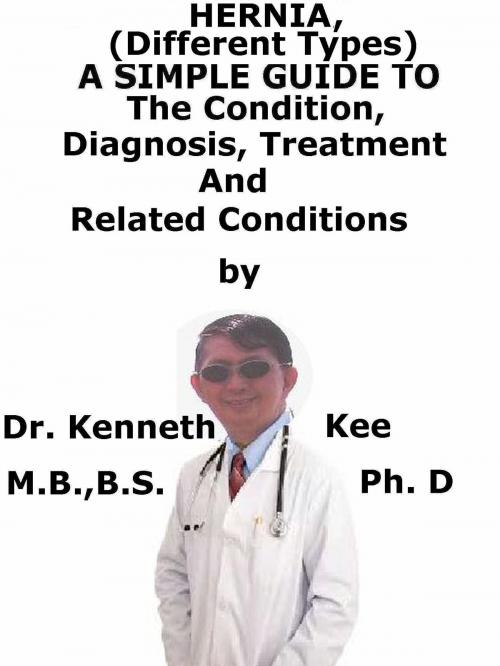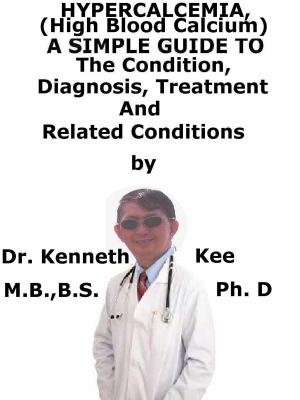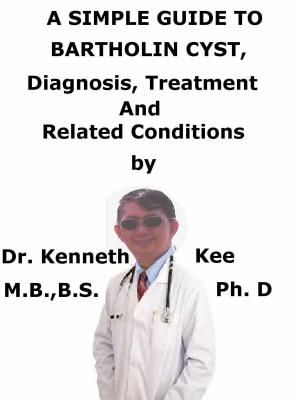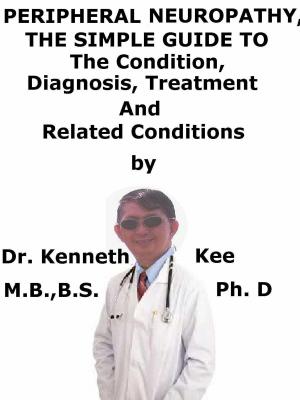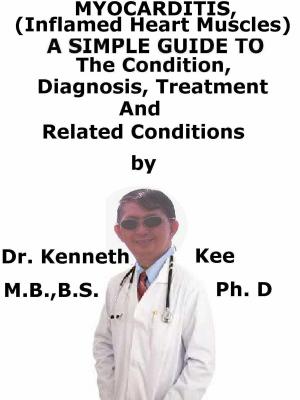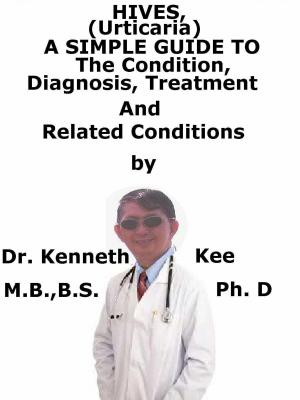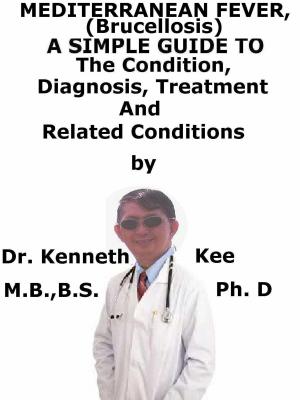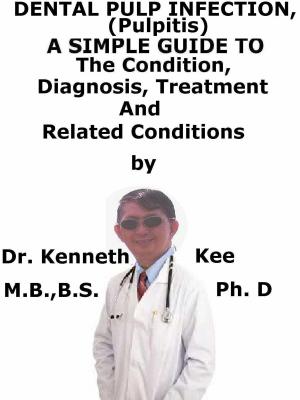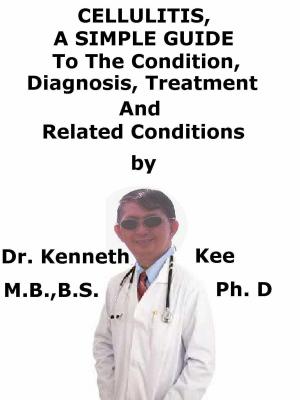Hernia, (Different Types) A Simple Guide To The Condition, Diagnosis, Treatment And Related Conditions
Nonfiction, Health & Well Being, Health, Ailments & Diseases, Musculoskeletal, Medical, Surgery| Author: | Kenneth Kee | ISBN: | 9781370378265 |
| Publisher: | Kenneth Kee | Publication: | June 6, 2017 |
| Imprint: | Smashwords Edition | Language: | English |
| Author: | Kenneth Kee |
| ISBN: | 9781370378265 |
| Publisher: | Kenneth Kee |
| Publication: | June 6, 2017 |
| Imprint: | Smashwords Edition |
| Language: | English |
A hernia happens when an internal part of the body pushes through an opening or weakness in the surrounding muscle or tissue wall.
What are the types of hernia?
1. Inguinal hernia
This is the most frequent type of hernia.
Males tend more likely to have inguinal hernias as they have a small tunnel in the tissues of their groins which happened when they were developing as a baby.
Tissue from the intestines can also travel into this tunnel, forming an inguinal hernia.
There are two main forms:
a. Indirect hernias, which are normally congenital and frequent in boys, and
b. Direct hernias, which are more frequent in adult men.
They can happen in both sides of the body.
2. Femoral hernia
Femoral hernia is a bulge in the upper thigh, just below the groin.
This happens when some tissue pushes through in the groin, a little lower down than where an inguinal hernia is produced.
They occur more often in women.
3. Incisional hernia
Incisional hernia can occur through a scar if the patient had abdominal surgery in the past.
4. Umbilical and para-umbilical hernias
Umbilical hernia is a bulge around the navel
It happens when some tissue pushes through the abdomen near to the navel (umbilicus)
5. Hiatal Hernia
Part of the upper stomach pushes up through the diaphragm into the chest.
6. Richter hernia
The Richter hernia happens when only the anti-mesenteric border of the bowel protrudes through the fascial defect
7. Spigelian hernia
This rare type of abdominal wall hernia happens through a defect in the spigelian fascia defined by the lateral edge of the rectus muscle at the semi-lunar line (costal arch to the pubic tubercle)
8. Obturator hernia
This hernia passes through the obturator foramen, tracking the path of the obturator nerves and muscles.
Other hernias
1. Epiploceles - Abnormal formation of the decussations of the linea alba, resulting in a midline pattern of single anterior and posterior lines, is vulnerable to the formation of epigastric hernias.
2. Internal supra-vesical hernias probably occur from a congenital fascial deficiency.
3. Peri-hernial fasciae or muscles may be abnormally formed in lumbar hernias.
4. Inter-parietal hernias are often a creation of ectopic testicular descent.
5. Perineal Hernia - Multi-parity and age form laxity of the pelvic floor to cause perineal hernias.
Congenital abdominal wall defects
1. Omphalocele
2. Gastroschisis
3. Pentalogy of Cantrell
Hernias may occur at birth, but the bulge may not be obvious until later in life.
Some people have a family history of hernias.
Babies and children can have hernias.
It occurs when there is weakness in the abdominal wall.
Inguinal hernias are frequent in boys
Occasionally, hernias can happen due to:
1. Heavy lifting
2. Straining while using the toilet
3. Any activity that increases the pressure inside the abdomen
The doctor can normally see or feel a hernia when the patient is examined.
The patient is examined both standing and lying and is asked to cough or strain.
The doctor may insert a finger through the top of the scrotum into the external inguinal ring and feel for a lump when coughing
Surgery is the only treatment that can permanently repair a hernia.
Surgery may be more dangerous for people with serious medical disorders.
Surgery repairs the weakened abdominal wall tissue (fascia) and tightens any holes.
Most hernias are tightened with stitches and occasionally with mesh patches to close the hole.
An umbilical hernia that does not recover on its own by the time a child is 5 years old will likely need to be repaired.
A hernia can cause strangulation when too much intestine comes through the gap in the muscle or ligament and becomes squeezed.
TABLE OF CONTENT
Introduction
Chapter 1 Hernia
Chapter 2 Causes
Chapter 3 Symptoms
Chapter 4 Diagnosis
Chapter 5 Treatment
Chapter 6 Prognosis
Chapter 7 Intussusception
Chapter 8 Varicocele
Epilogue
A hernia happens when an internal part of the body pushes through an opening or weakness in the surrounding muscle or tissue wall.
What are the types of hernia?
1. Inguinal hernia
This is the most frequent type of hernia.
Males tend more likely to have inguinal hernias as they have a small tunnel in the tissues of their groins which happened when they were developing as a baby.
Tissue from the intestines can also travel into this tunnel, forming an inguinal hernia.
There are two main forms:
a. Indirect hernias, which are normally congenital and frequent in boys, and
b. Direct hernias, which are more frequent in adult men.
They can happen in both sides of the body.
2. Femoral hernia
Femoral hernia is a bulge in the upper thigh, just below the groin.
This happens when some tissue pushes through in the groin, a little lower down than where an inguinal hernia is produced.
They occur more often in women.
3. Incisional hernia
Incisional hernia can occur through a scar if the patient had abdominal surgery in the past.
4. Umbilical and para-umbilical hernias
Umbilical hernia is a bulge around the navel
It happens when some tissue pushes through the abdomen near to the navel (umbilicus)
5. Hiatal Hernia
Part of the upper stomach pushes up through the diaphragm into the chest.
6. Richter hernia
The Richter hernia happens when only the anti-mesenteric border of the bowel protrudes through the fascial defect
7. Spigelian hernia
This rare type of abdominal wall hernia happens through a defect in the spigelian fascia defined by the lateral edge of the rectus muscle at the semi-lunar line (costal arch to the pubic tubercle)
8. Obturator hernia
This hernia passes through the obturator foramen, tracking the path of the obturator nerves and muscles.
Other hernias
1. Epiploceles - Abnormal formation of the decussations of the linea alba, resulting in a midline pattern of single anterior and posterior lines, is vulnerable to the formation of epigastric hernias.
2. Internal supra-vesical hernias probably occur from a congenital fascial deficiency.
3. Peri-hernial fasciae or muscles may be abnormally formed in lumbar hernias.
4. Inter-parietal hernias are often a creation of ectopic testicular descent.
5. Perineal Hernia - Multi-parity and age form laxity of the pelvic floor to cause perineal hernias.
Congenital abdominal wall defects
1. Omphalocele
2. Gastroschisis
3. Pentalogy of Cantrell
Hernias may occur at birth, but the bulge may not be obvious until later in life.
Some people have a family history of hernias.
Babies and children can have hernias.
It occurs when there is weakness in the abdominal wall.
Inguinal hernias are frequent in boys
Occasionally, hernias can happen due to:
1. Heavy lifting
2. Straining while using the toilet
3. Any activity that increases the pressure inside the abdomen
The doctor can normally see or feel a hernia when the patient is examined.
The patient is examined both standing and lying and is asked to cough or strain.
The doctor may insert a finger through the top of the scrotum into the external inguinal ring and feel for a lump when coughing
Surgery is the only treatment that can permanently repair a hernia.
Surgery may be more dangerous for people with serious medical disorders.
Surgery repairs the weakened abdominal wall tissue (fascia) and tightens any holes.
Most hernias are tightened with stitches and occasionally with mesh patches to close the hole.
An umbilical hernia that does not recover on its own by the time a child is 5 years old will likely need to be repaired.
A hernia can cause strangulation when too much intestine comes through the gap in the muscle or ligament and becomes squeezed.
TABLE OF CONTENT
Introduction
Chapter 1 Hernia
Chapter 2 Causes
Chapter 3 Symptoms
Chapter 4 Diagnosis
Chapter 5 Treatment
Chapter 6 Prognosis
Chapter 7 Intussusception
Chapter 8 Varicocele
Epilogue
